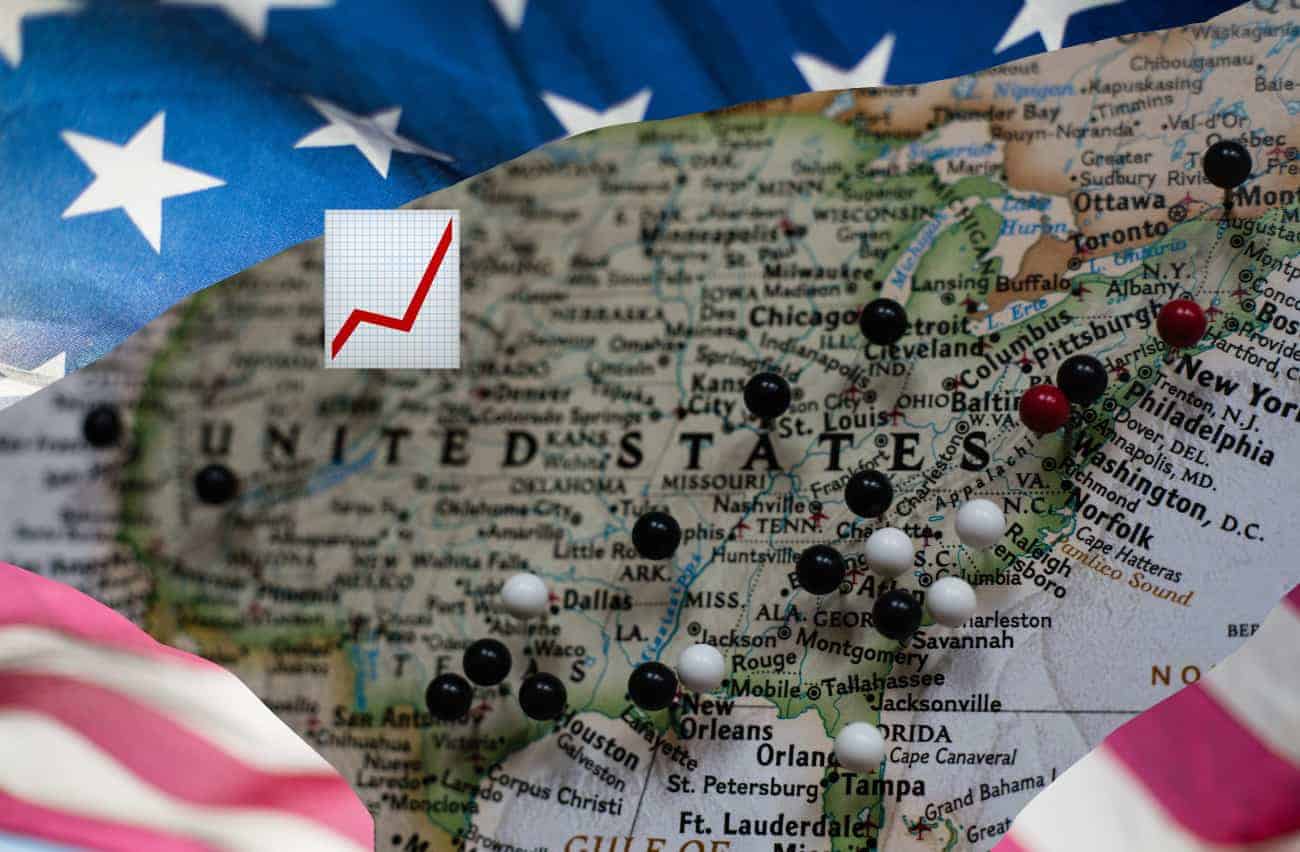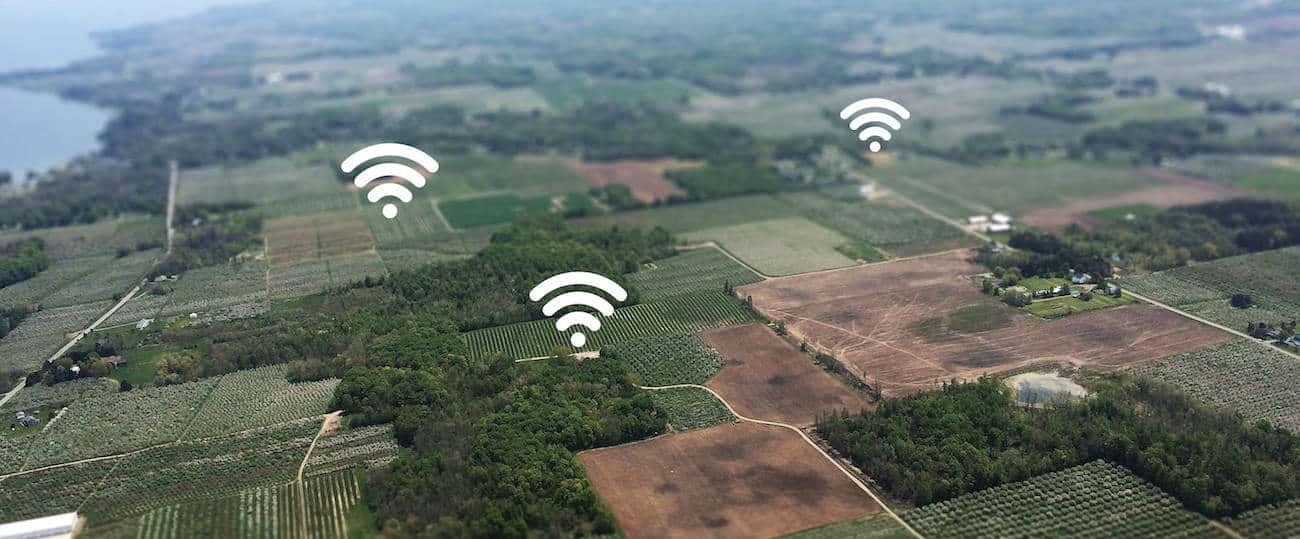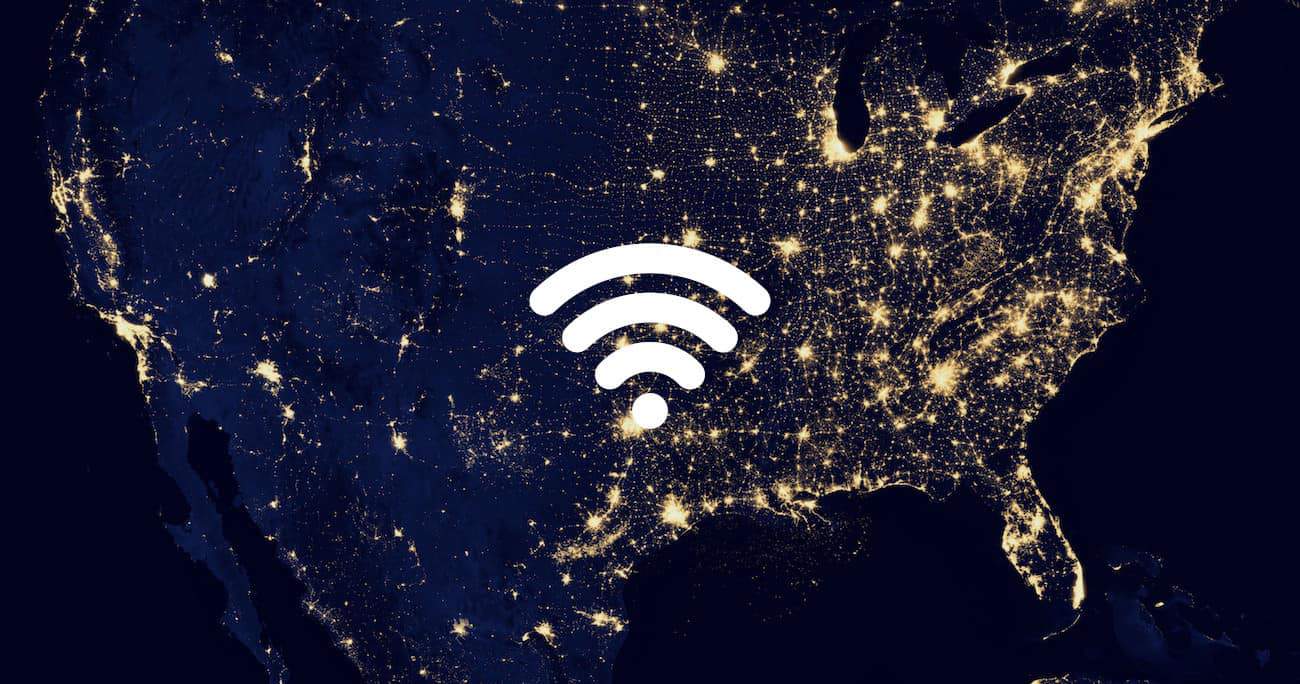Broadband Coverage Statistics and Average Internet Speed for All 50 US States Q2–Q3 2018
Broadband coverage and speeds are an economic development issue in all 50 US states. More than 90% of small businesses are Internet-dependent , and studies consistently link broadband improvement with increased employment.
In spite of these facts, broadband competition and growth is notoriously slow in all 50 US states. FCC filings show that 24 million Americans still don’t have access to broadband Internet at home in 2018. Millions more can only get slow, unreliable DSL service. Many of the “dark spots” are in states with large swaths of rural, economically disadvantaged areas.
See the table below for an overview of which US states have the best and worst Internet, ranked from worst to best broadband connectivity. Information on how this data was compiled is included below the table.
Internet Connectivity in US States
Key Facts
- Montana has the worst broadband coverage among US states at 69.2%.
- Montana also has the worst average Internet speed among US states: 20.3 Mbps.
- New Jersey has the highest broadband coverage at 99%.
- New Jersey also has the highest average Internet speed, clocking in at 52 Mbps.
- The average Internet speed across all US states in the past 12 months was 35.36 Mbps. All state averages were within 17 Mbps of the national average.
| State | Connectivity Rank | Average Speed | Broadband Coverage |
|---|---|---|---|
| New Jersey | 1 | 52.0 Mbps | 99% |
| Connecticut | 2 | 41.8 Mbps | 99% |
| Rhode Island | 3 | 46.7 Mbps | 98.2% |
| New York | 4 | 45.2 Mbps | 97.8% |
| Massachusetts | 5 | 43.5 Mbps | 97.6% |
| Delaware | 6 | 44.9 Mbps | 97.5% |
| Hawaii | 7 | 22.5 Mbps | 96% |
| Maryland | 8 | 51.3 Mbps | 96.7% |
| California | 9 | 29.0 Mbps | 94.5% |
| Florida | 10 | 41.2 Mbps | 94.9% |
| Utah | 11 | 37.2 Mbps | 94.9% |
| Pennsylvania | 12 | 41.4 Mbps | 94.7% |
| New Hampshire | 13 | 37.4 Mbps | 94.3% |
| Washington | 14 | 41.0 Mbps | 94.2% |
| North Carolina | 15 | 42.4 Mbps | 93.1% |
| Ohio | 16 | 32.1 Mbps | 91.9% |
| Illinois | 17 | 40.4 Mbps | 92.3% |
| North Dakota | 18 | 28.6 Mbps | 92.2% |
| Nevada | 19 | 34.3 Mbps | 91.8% |
| Georgia | 20 | 39.1 Mbps | 90.6% |
| Maine | 21 | 21.2 Mbps | 89.7% |
| Virginia | 22 | 48.7 Mbps | 89.9% |
| Colorado | 23 | 40.9 Mbps | 90.4% |
| Tennessee | 24 | 36.6 Mbps | 89.9% |
| Oregon | 25 | 39.1 Mbps | 89.7% |
| Michigan | 26 | 28.7 Mbps | 88.3% |
| Minnesota | 27 | 36.8 Mbps | 88.1% |
| South Carolina | 28 | 39.3 Mbps | 88.2% |
| Arizona | 29 | 33.9 Mbps | 86.7% |
| Texas | 30 | 46.9 Mbps | 86.9% |
| Vermont | 31 | 22.4 Mbps | 86.1% |
| Wisconsin | 32 | 37.4 Mbps | 85.3% |
| South Dakota | 33 | 26.8 Mbps | 85.3% |
| Indiana | 34 | 36.7 Mbps | 85.7% |
| Kentucky | 35 | 30.5 Mbps | 85.3% |
| Louisiana | 36 | 35.1 Mbps | 84.6% |
| Idaho | 37 | 25.6 Mbps | 82% |
| Iowa | 38 | 24.7 Mbps | 83.7% |
| Nebraska | 39 | 27.1 Mbps | 82.4% |
| Kansas | 40 | 39.9 Mbps | 81.9% |
| Alabama | 41 | 33.7 Mbps | 81.2% |
| Missouri | 42 | 38.5 Mbps | 80.1% |
| New Mexico | 43 | 30.0 Mbps | 80.3% |
| Alaska | 44 | 27.9 Mbps | 78.2% |
| West Virginia | 45 | 29.9 Mbps | 75.2% |
| Wyoming | 46 | 26.8 Mbps | 74.5% |
| Oklahoma | 47 | 40.2 Mbps | 73.3% |
| Arkansas | 48 | 25.0 Mbps | 76.7% |
| Mississippi | 49 | 25.2 Mbps | 70.2% |
| Montana | 50 | 20.3 Mbps | 69.2% |
State-by-State Internet Coverage and Speed Trends

The biggest trend seen in this data is straightforward: large, rural states tend to have worse Internet speeds and coverage when compared to smaller, more compact states such as New York.
This makes sense financially because it’s efficient for Internet providers to focus expansion in more densely populated, urban areas. Even with $10 Billion poured into broadband development subsidies annually, Internet providers consistently focus on populations with high density and high incomes, since these promise a strong return on investment.
The trend of focusing development on urban areas holds true for smaller, more popular “startup” providers like Google Fiber and Ting as well as larger, more poorly-reviewed cable corporations like Xfinity and AT&T.
That said, state wealth doesn’t have a one-to-one bearing on Internet infrastructure quality, with the wealthiest US states like California and Minnesota landing in the middle of the list. On the whole, however, wealthier states tend to be closer to the top of the scoreboard.
Kansas, West Virginia, New Mexico, Montana, and other economically disadvantaged states round out the bottom of the list. These states have the worst Internet among US states, in terms of access to 25 Mbps download speeds and wired Internet.
How We Ranked US State Internet Coverage and Connectivity
Our Internet rankings on BroadbandNow are based on our proprietary Internet coverage database.
We start by pulling FCC Form 477 data, which is released by the government biannually. We then cross-validate governmental data against private datasets and coverage filings sourced from providers directly.
By building data relationships with large and small ISPs across the US, we’re able to produce coverage maps that are more detailed than FCC mapping tools, and more accurately reflect current ISP expansion in new markets.
For more information on how we process Internet coverage data and statistics, see our data FAQ page.
Want to go deeper with internet stats in the U.S.?
- See an updated list of all 50 states rank for internet access, pricing, and speeds in 2020. (New Jersey is now the best, Alaska is the worst.)
- Check out updated broadband statistics for every city in the county, including internet access in Seattle, Philadelphia, and Detroit.
- Find information on the top internet service providers in the U.S. such as AT&T, Charter Spectrum, and Xfinity.
How We Defined “Connected” During Data Analysis
For the purposes of this report and other pages on BroadbandNow, “connectivity” is a measure of access to 25 Mbps download/3 Mbps upload Internet for residential use. 25 Mbps is the FCC definition of “broadband”, the minimum speed required to service modern applications and use cases.
Connectivity is measured on the census block level. If a provider records service in a census block area, we mark the population of that census block as “covered.”
How We Calculated The Average Speed for Every US State
Our speed data is based on user speed tests aggregated by M-Labs, an open-source project jointly run by Google, Princeton University, and several other public entities. M-Labs powers the speed test tool built into Google search, as well as our speed test tools on BroadbandNow.
When processing this data, we split out results according to provider, state, and city. This data also power our ranking of cities with the fastest Internet in the US, as well as our rankings of the fastest Internet providers.
Issues with Speed Test Data
There are a few issues with using speed test data to measure state performance:
- Faulty tests: users commonly run speed tests to diagnose issues with their Internet service. As a result, a disproportionate number of speed tests collected represent home networking issues like faulty routers, modems, and etc. This drags down the average several points below what you can expect as a customer.
- Preference for economy plans: most customers don’t subscribe to the fastest plan Internet providers offer in their area. As a result, slower economy plans are disproportionately represented in state and city speed averages.
International Context: The United States Internet Rank
FCC vs BroadbandNow US State Internet Speed Rankings
FCC reports rely on OOKLA speed test data, and result in higher averages across the board. We use M-Labs datasets for our speed calculations because the data pool is larger and backed by trusted names in data aggregation like Google and Princeton. In our opinion, the M-Labs dataset is less prone to manipulation.
The Internet was born in the USA, and you might assume that our Internet speeds outpace the rest of the developed world.
In fact, US Internet speeds rank #10 when compared to other nations by the FCC, with a mix of Asian and European countries (Japan, Iceland, etc) grabbing the top spots.
| Rank | Country | Average download speed |
|---|---|---|
| 1 | Luxembourg | 375.78 |
| 2 | Japan | 102.34 |
| 3 | Iceland | 90.36 |
| 4 | South Korea | 86.98 |
| 5 | Switzerland | 79.58 |
| 6 | Sweden | 73.81 |
| 7 | Netherlands | 67.54 |
| 8 | Denmark | 61.49 |
| 9 | Spain | 57.86 |
| 10 | United States | 55.07 |
Next Steps: How Can Internet Improve in Rural States?

For rural states, broadband development often comes down to tempting incumbent providers to expand, either with regulatory incentives or using government grant money to build out infrastructure. This can be frustrating for Internet users stuck on 2 Mbps DSL while the regulatory war rages on in Washington.
Many states have turned to publicly-funded or publicly-owned alternatives like municipal broadband. While these programs face criticism for “utilitizing” Internet connections, they have been a successful driver of economic growth in dozens of cities and towns across the US.
Farther down the line, space enthusiasts have been rallying around Elon Musk’s of SpaceX’s plan to build a low-orbit satellite mesh. This could create major competition for the lackluster satellite services currently available to rural customers, which tend to have extremely low data caps and speeds.
Musk promises a launch of this service by 2020. But with millions of Americans waiting in the dark, it’s imperative that wired development continues, rather than waiting around for a space-age “quick fix.”


